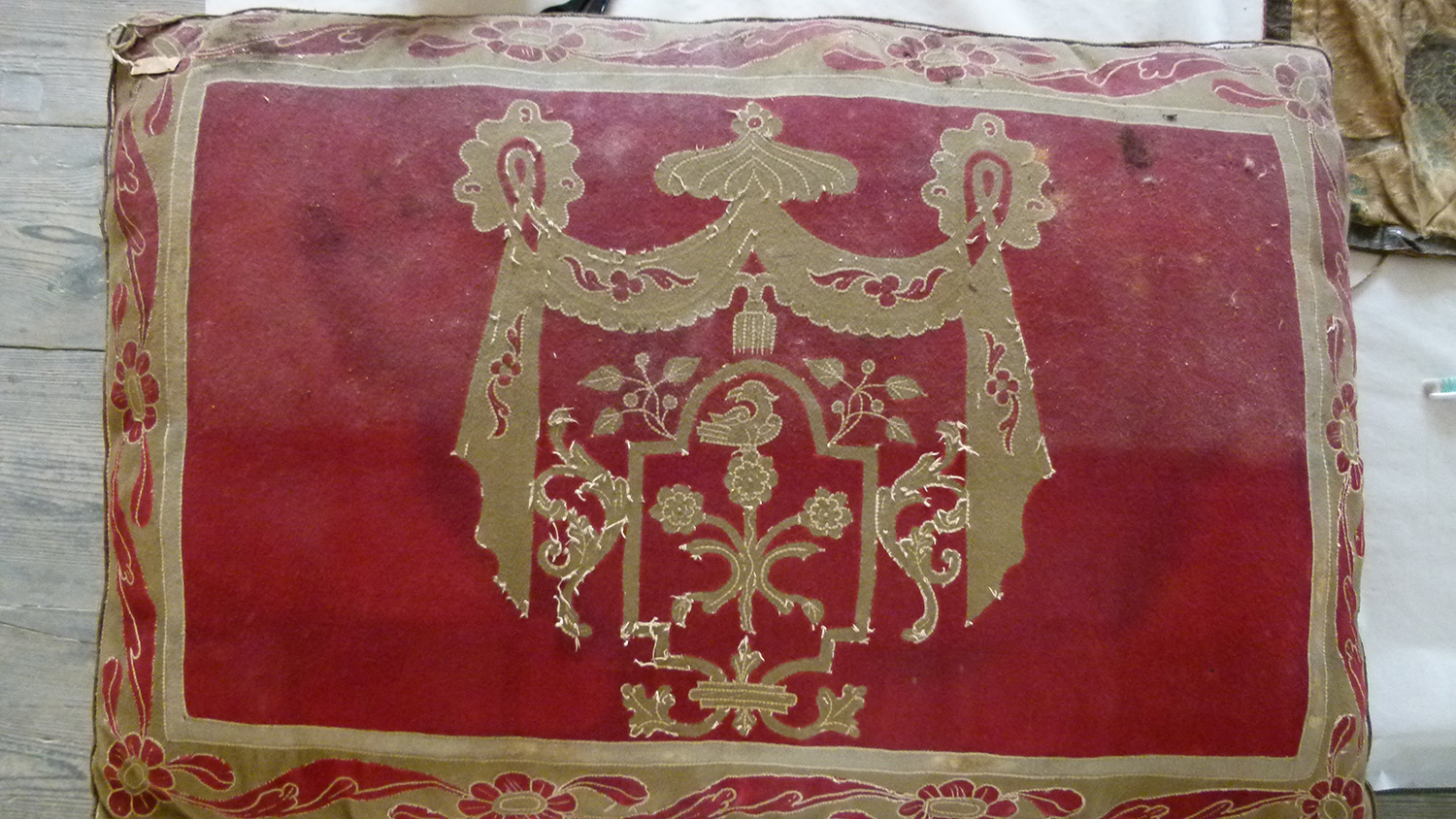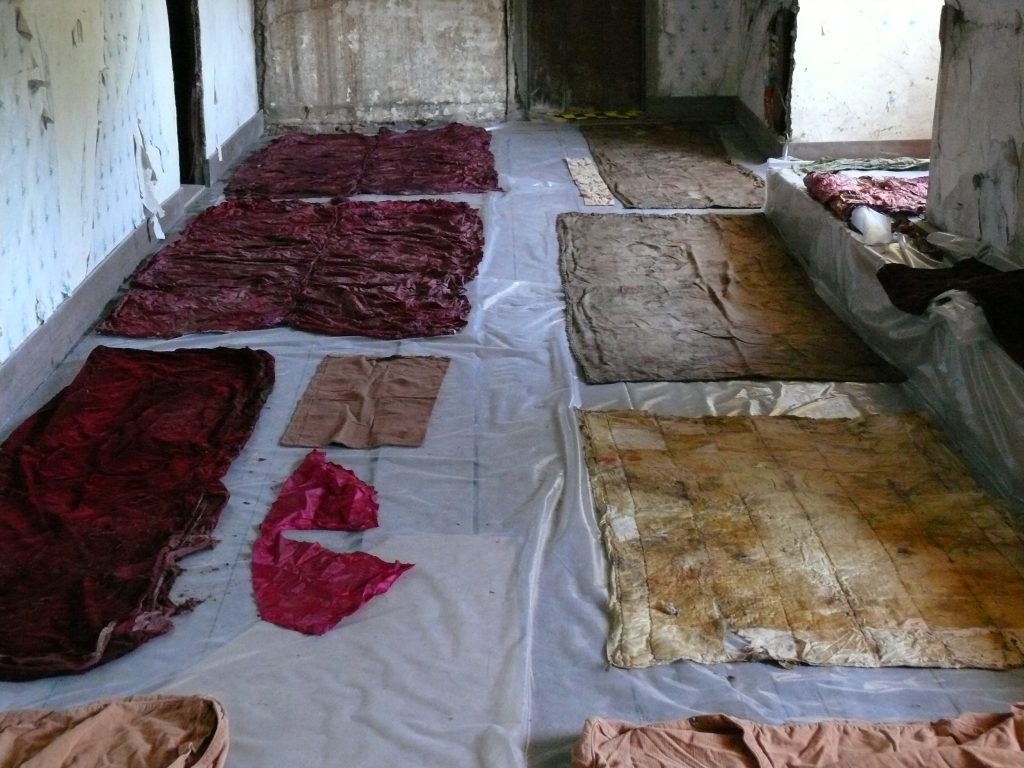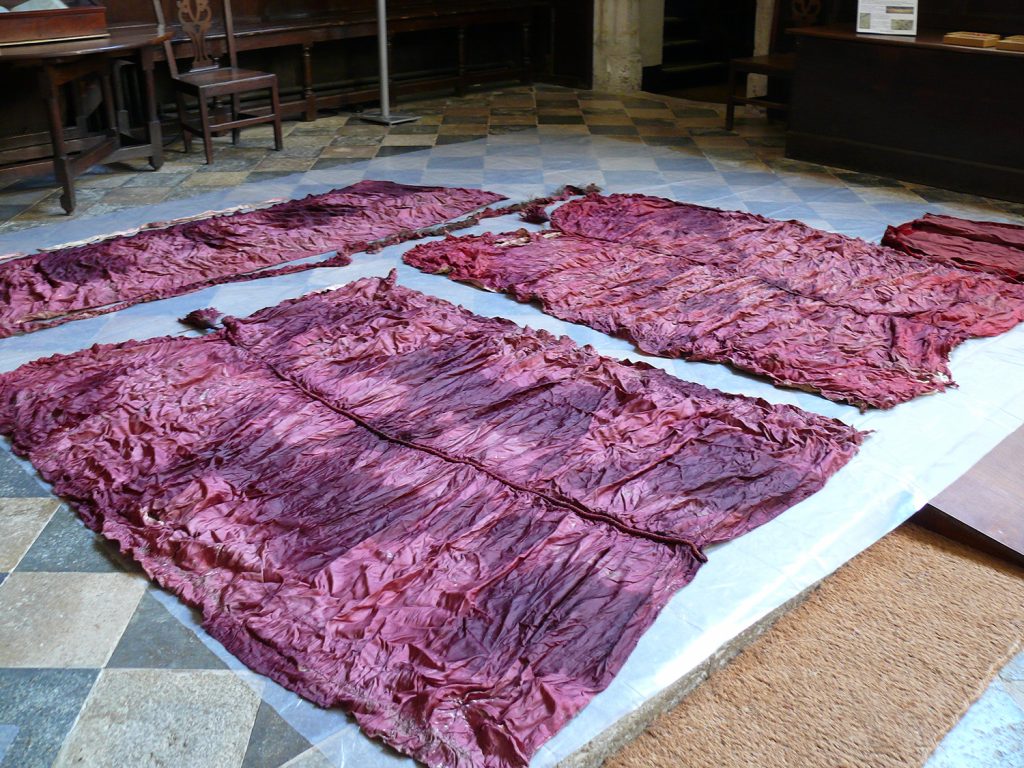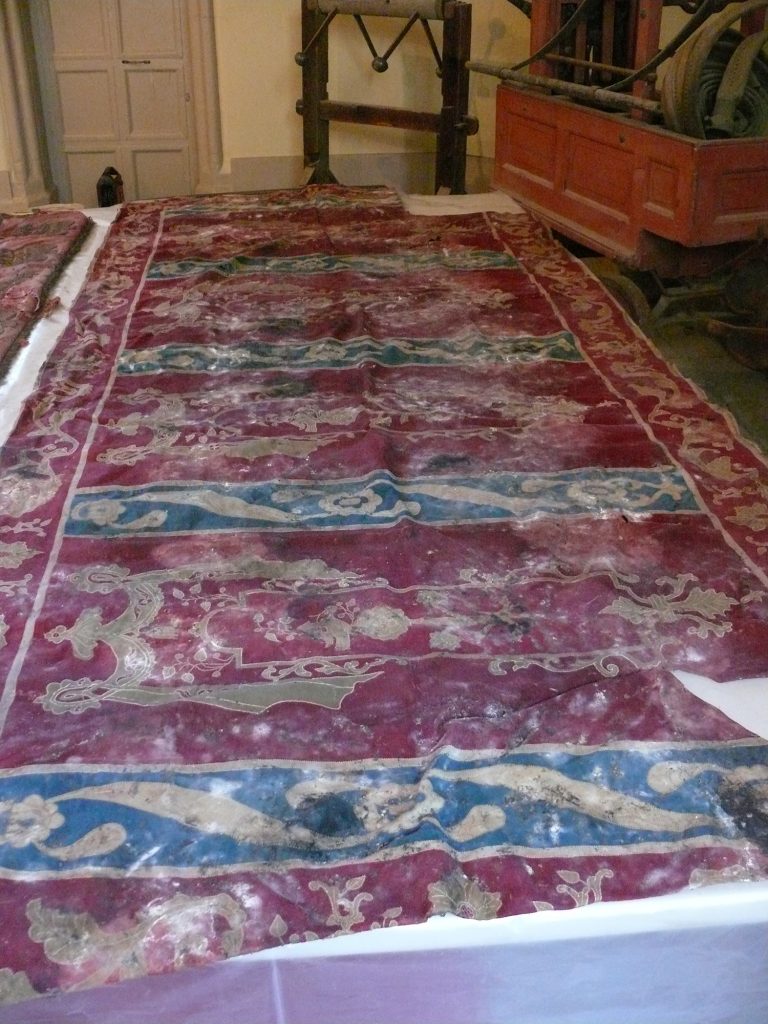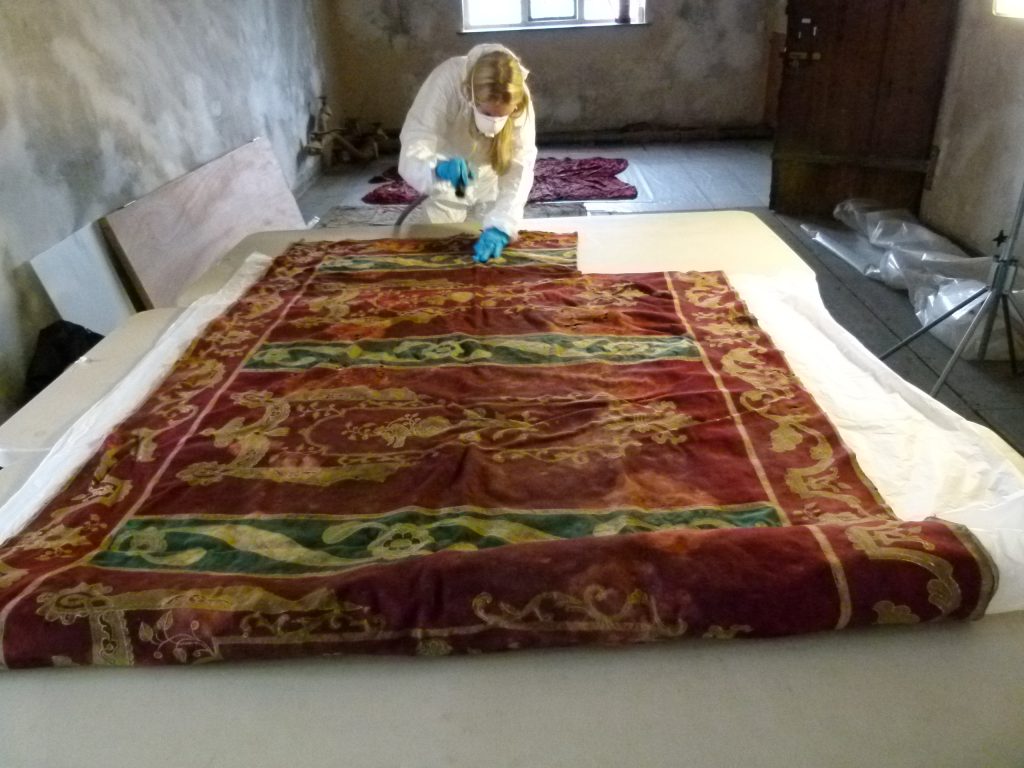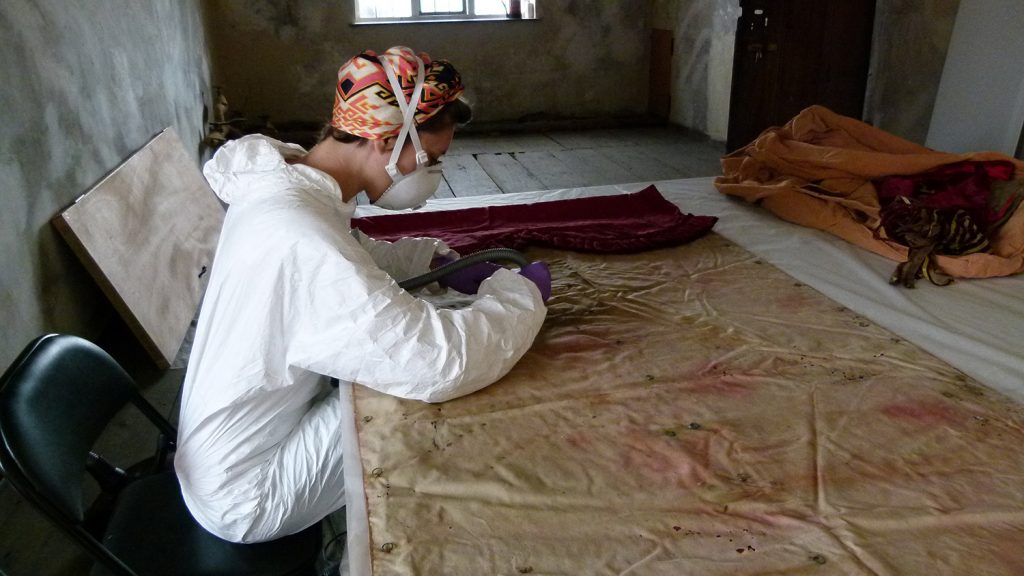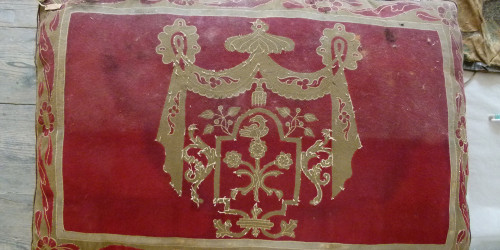
Over the years we have had to answer several disaster calls most often involving water or pest outbreak. Sometimes the disaster is so big that the emergency services are the only ones allowed on the scene (The Clandon Park fire for example) and we have become involved after the event. Read more about our involvement in the Clandon Park fire and state bed retrieval.
Luckily these sorts of disasters are rare. An example of a more typical disaster that we have helped with is illustrated this project – an urgent request to help retrieve textiles stored in a local stately home that had been damaged over night by a leaking pipe as a result of building work. On our arrival we found that builders had already hurriedly moved the folded textiles to a drier area but with little regard for how to safely dry them. We were asked to properly retrieve the textiles, laying them out to dry, giving each an initial examination and report with a view to determining condition prior to the accident and subsequent current condition after the water damage.
Once we had undertaken our initial assessments the textiles were carefully laid out on polythene to dry; we eased out sodden folds and creases as much as possible without causing damage separating out layers of textile with obvious colour run. Despite our quick response many of the textiles were extremely mould damaged and these required careful handling from a Health and Safety point of view. Our conservators therefore had to wear full PPE (Tyvek suits, gloves and masks, HEPA filters for vacuum cleaners) for the duration of the project which was quite challenging in the very hot summer weather.
Once dry the textiles were thoroughly surface cleaned to remove as much dust, mould and other debris as was practical. The textiles were then soft packed; folds were padded using acid free tissue and the textiles wrapped in tissue and a layer of Tyvek secured using cotton tape and safety pins as appropriate. Additional support was given to some of the larger textiles using sheets of Correx. Each textile was labelled and a basic photograph was attached for identification purposes. Although disasters are always unwelcome and to be avoided they can give welcome opportunity for basic cataloguing and collections care to be put in place.
